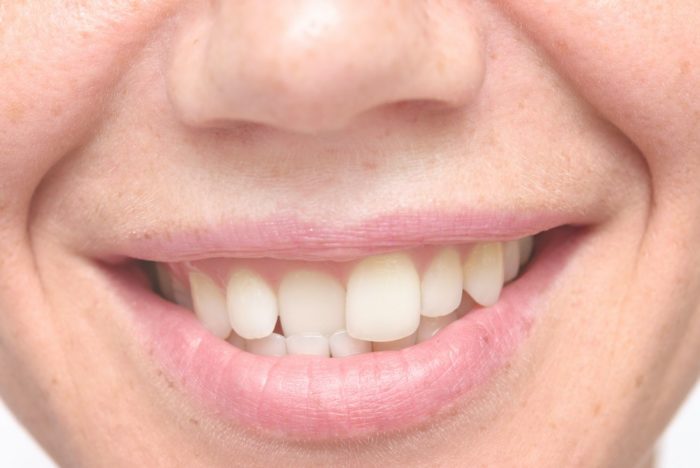A “bite” refers to where the top teeth and the bottom teeth come together in the mouth. Dentists refer to issues with the teeth meeting properly or not meeting at all as “malocclusions” or bite problems.
Bite problems are unique to every patient and can stem from a number of factors. If left untreated, bite problems can cause issues with speech, premature wearing away of the protective layer of enamel, or injury to the jaw joint. Read on to learn more about the types of bite problems that could impact your smile.

Crowding
Crowding is when there is not enough space for the teeth to sit properly. The size of the jaw and teeth can lead to this type of malocclusion. Crowding can cause the teeth to overlap or rotate.
Crowding can also lead to crookedness in the teeth. This can make it hard to clean in between the teeth, which can increase a dental patient’s risk of getting cavities. Crowding can also cause gum disease over time.
Spacing
Spacing is when there is too much space between the teeth, leading to gaps in the smile. This is the opposite problem of teeth crowding.
Gaps between teeth can mean that food can get stuck in the open spaces. If food lingers in the smile, it could potentially cause cavities or gum disease.
Overbite
An overbite is when the top teeth sit too far over the bottom teeth due to jaw positioning. While many people have a slight overbite, a severe overbite can cause tooth decay, gum disease, or jaw pain.
Underbite
An underbite occurs when the bottom arch of teeth extends further than the top teeth. An underbite can potentially wear down the teeth and create stress and tension on the jaw joint.
Crossbite
A crossbite refers to when the top teeth fit inside of the bottom teeth. This can impact one tooth or many.
This problem can cause the edges of the top arch of teeth to grate against the bottom teeth. Left untreated, a crossbite can make the protective enamel wear down, potentially causing the jaw to shift or grow lopsided.
Open Bite
An open bite is when the top teeth and the bottom teeth do not entirely meet when the mouth closes. An open bite can develop due to the tongue thrusting through the teeth excessively, thumb sucking, or mouth breathing. There are two common types of open bites: anterior and posterior.
- An anterior open bite is when the back teeth meet, but the front teeth do not.
- A posterior open bite is when the front teeth meet, but the back teeth do not.
Dental patients with a crossbite may notice difficulties with speech, swallowing, and chewing.
Overjet
An overjet is when the top front teeth protrude outward. With an overjet, the top teeth will jet away from the bottom teeth diagonally while the back teeth are touching.
Overjets can make it difficult or uncomfortable to fully close the mouth and lips. This can cause the oral tissue to dry out and make it more susceptible to tooth decay.
